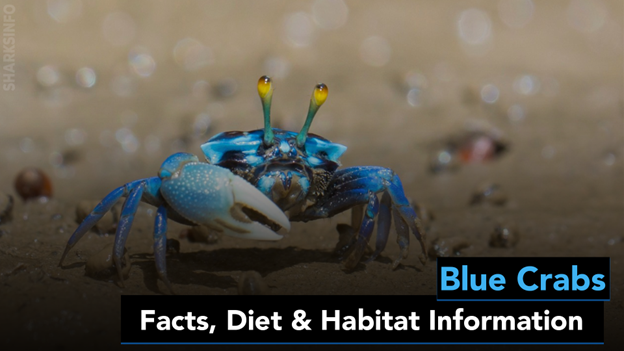The blue crab’s unique coloration, interesting habits, and the fact that they are a popular food source in many areas compel us to get to learn about the species. Well, this article is going to cover it all, facts, diet, habitat information, and all.
Everything you need to know about the blue crabs
The Chesapeake Bay is home to the magnificent blue crab – a beautiful creature with a blue-green shell and delicate white meat. These crabs are a vibrant part of the Bay ecology and are an important part of the local economy. The crab is also an excellent scavenger, helping to keep the Bay clean.
1: Scientific classification
| Kingdom | Animalia |
| Phylum | Arthropoda |
| Subphylum | Crustacea |
| Class | Malacostraca |
| Order | Decapoda |
| Infraorder | Brachyura |
| Family | Portunidae |
| Genus | Callinectes |
| Species | sapidus |
2: Physical attributes
Crabs come in a variety of species, but the Blue Crab stands out with its bright blue legs. Blue Crabs have claws, but for females, these claws are tipped with bright red. Besides a front pair of walking legs, they also have two rear swimming legs that resemble paddles.

Known as the “carapace,” the shell of the blue crab ranges from blue to olive green and can reach up to 9 inches in diameter.
3: Habitat
Blue crabs are found on the Atlantic coast from Maine to Florida and on the Gulf coast from Florida to Mexico.
They are a highly adaptable species and can be found in a variety of habitats, from estuaries and lagoons to open waters. They are most commonly found in brackish or salt water and can endure a wide range of crab temperatures.

4: Diet
In addition to scavenging, blue crabs hunt as well. They are devious feeders and will devour a range of food items, together with other crabs, mollusks, and fish. Clams, oysters, mussels, smaller crustaceans, dead fish, plant detritus, and smaller blue crabs are among their favorite foods.

5: Lifespan
The average life expectancy of a blue crab is about 2-3 years. However, some blue crabs can live up to 5 years.
6: Predators
Sea turtles, birds, and large fish are common hunters in estuaries and coastal lagoons where these crabs live. Their larval stage puts them at risk of a broader array of predators, including small fishes.

Crabs are also heavily harvested by humans in the Gulf for their meat, thereby contributing significantly to the region’s economy.
Blue crabs facts
- Blue crabs are also notorious as Chesapeake blue crabs or Maryland blue crabs.
- The blue crab population is currently declining due to overfishing, contamination, and habitat loss.
- It takes blue crabs 12 to 18 months to reach maturity. Their growth rates depend on the temperature of the water. Warmer water allows them to grow faster.
- The distribution of blue crabs varies with their age, gender, and season. As the weather cools, they burrow into the sediment in the deep parts of the Bay to spend the winter.
Conclusion
The blue crab is a species of crab that is inborn to the waters of the Atlantic Ocean. Known for their blue coloration and hard shell, they are a popular seafood choice and are harvested for their meat. It is also a popular recreational species, with many people enjoying crabbing for blue crabs in the Chesapeake Bay and other coastal areas.







